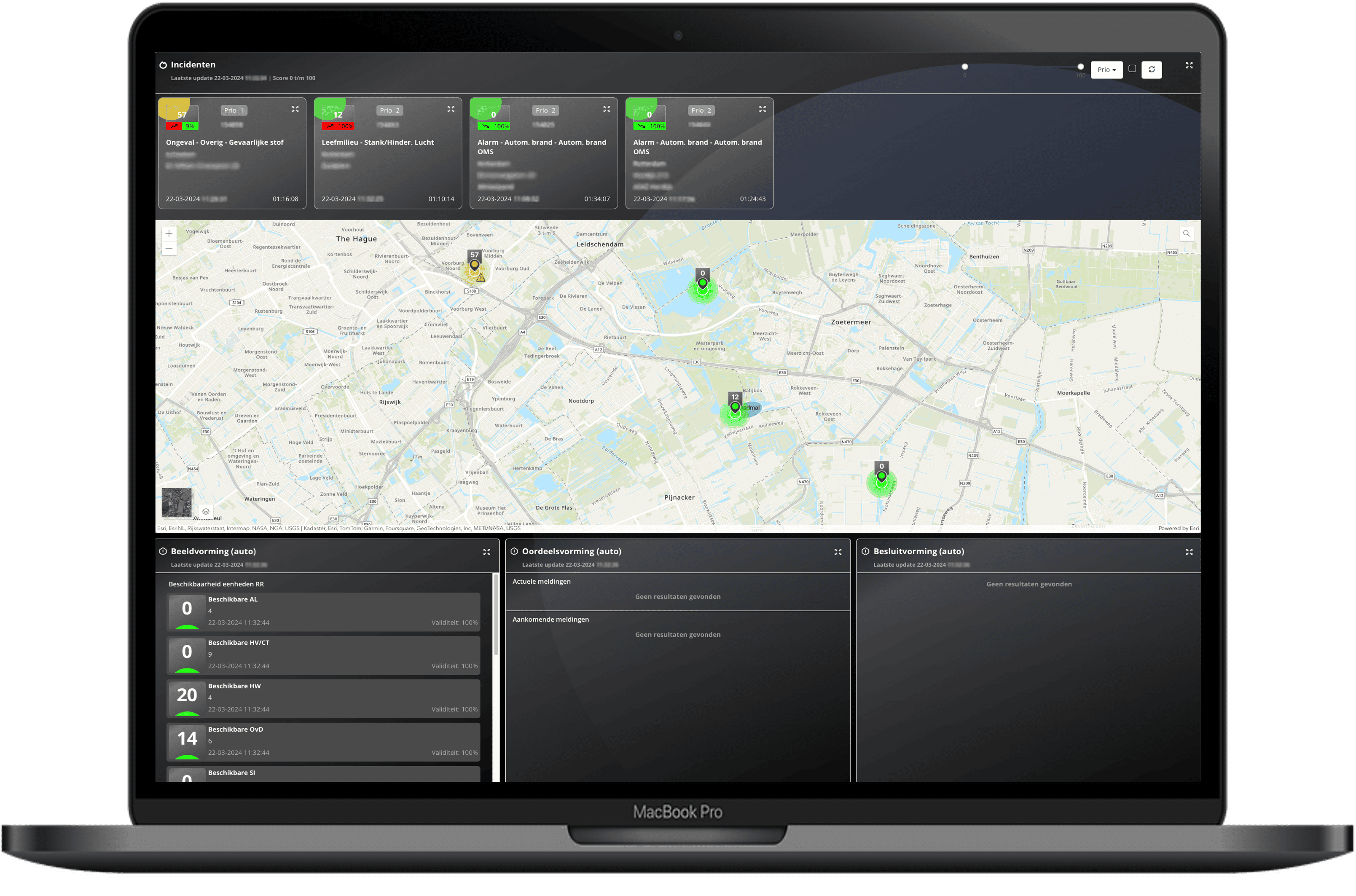Low-Code Enhances First Responder Decision Making
When a crisis unfolds, response time and efficiency are critical. Having the correct information at the right moment can help first responders make safer, informed choices when each second matters. Robbert Heinecke knows this firsthand.
“For 25 years now, I’ve been a firefighter — I’ve been an incident commander on the street for many years — but I’m also an IT specialist,” said Heinecke.
After working on a Mendix platform-based project, Heinecke saw even greater potential for low-code to serve the public sector. Together with the Safety regions Rotterdam-Rijnmond and Zuid Holland-Zuid and the Unified Fire Brigade he saw an opportunity to build an application that could help save lives, prevent damage, and improve safety for first responders.
Working with Mendix implementation partner, JAM-IT, the Decision Support application was developed throughout the course of 2023. It was launched on New Years Eve that same year – processing 600 incidents and providing invaluable intelligence for first responders.
Low-Code for Good
As an incident commander and IT specialist, Robbert Heinecke is always looking for ways to use technology — including drones and robots — to make firefighting safer and more efficient.
His first exposure to low-code technology and the Mendix platform came while building an emergency processing application for refugees entering the Netherlands after compounding global crises.
“I created a program that was meant to cover three months of new arrivals. Soon, three months became two years, and we knew we had to expand to more municipalities,” said Heinecke.
Heinecke saw the long-term potential of Mendix to:
- Translate the requirements of users in the field to modern, professional digital solutions.
- Develop highly custom and bespoke applications for niche public sector use-cases in a resource-efficient way as compared to traditional programming.
- Speed the delivery and enhancement of these custom solutions by leveraging reusable design, components, or integrations.
“If these solutions were on the shelf, I would have just bought them. There is no decision support system available that’s anything like it,” said Heinecke.
“If we convert the right data into information that supports decision-making, we create a safety net that helps the first responder. And the Mendix application is the way we present that information.”
Heinecke chose JAM-IT to help build and steer the development of his new decision support application. The Netherlands-based IT firm is a recognized Mendix partner and has built successful Mendix-based applications for government clients like the City of Rotterdam.
“Mendix collaborates with JAM-IT, and JAM-IT has a strong relationship with the municipality of Rotterdam. We also collaborate with Rotterdam, it’s the biggest city in our safety region,” said Heinecke. “So, for us, having the municipality say, ‘That’s a good company that you can trust’ really helped us decide.”
Ultimately, Heinecke chose Mendix to package his decision support information for the Safety Region into an innovative application that would augment first responder information access.
Empowering First Responders
The Decision Support (Beslishulp) application combines data sources in a novel way and presents them in one information hub designed to maximize decision support. The app connects a low-code frontend built on the Mendix platform to the backend built as a custom data warehouse, creating a robust safety tool unlike anything else on the market.
The composable nature of Mendix allowed Heinecke to use the same low-code framework underpinning the refugee registration application as the foundation for the Decision Support application. Development began in early 2023, and by the end of the year, the app was ready to operationalize in real-life situations with the Safety Region.
Decision Support combs all available and relevant informational sources to ensure every aspect of an emergency is handled quickly and efficiently. This includes:
- The biometrics of the individual responders
- Building blueprints and maps
- Weather data from the impacted area

“We start with the data and a map and then add the decision support part. Later on, we have the graphs with all heart rate measurements and more in the incident,” said Heinecke.
The application is used by dispatch, which acts as an informational filter to the on-the-ground incident commander. Sometimes, the tool can initiate background protocols while dispatch and firefighters are busy containing the fire.
Apartment building evacuees during the winter, for instance, may need a safe, dry, and warm place to go for the night. Arrangements can be initiated immediately based on weather and other data.
“If there’s an incident in a parking garage and we have data access, we can know how many cars are inside, if any are they charging, and how many are charging,” said Heinecke. “It’s useful to know of a potential electrical car on fire, that you can’t extinguish so that you can proactively already send or call somebody with the right solutions.”

Data-Driven Decision Making
When department dispatchers have real-time information, they can ensure fire department trucks and fighters are where they are most needed on a busy night — from one department to others within the coverage area.
In addition to community-directed safety measures, Heinecke’s tool combines disparate data sources to keep first responders safe as they navigate dangerous emergencies. The Decision Support application leverages both 2D and 3D maps – the former to provide an overview of incidents, and the latter to provide detailed information about the impacted building or structure.

“On our first night in operation, there was a house fire. They could hear the fire inside the walls, and since it was a very old house, there was the danger of asbestos,” said Heinecke. “So we said, ‘If there is a fire and if you’re breathing the air, be aware of the hazardous material,’ and dispatch gave that info to the team leader.”
A wearable device tracks the responder’s biometrics, such as their skin temperature and heart rate, in real-time. Routing the information to a secure database and applying numerical identifiers to each responder keeps the solution GDPR compliant and ensures anonymity. This individual data is visualized on a two-line graph, and a dispatcher can prompt intervention if either value exceeds a safe threshold.
Robbert and the JAM-IT team have already begun to take live data and make improvements to the user experience. This includes remote dispatch and a new dashboard with a regional overview of incident management.
Continued Innovation in the Public Sector
The Safety Region is already using Heinecke’s Decision Support application to break information silos and create new ways to support first responder decisions in on-the-ground situations.
As they continue operationalizing the application in real-world scenarios, they collect valuable data. This data improves the information they share currently and provides the model for future machine learning and generative AI optimizations.
“Now, if advice is given or if we make any kind of decision, then we write down why, and with that, we are collecting data,” said Heinecke. “We have millions of data points already. With that data — maybe this year or next — we work to create an AI model with what we have learned with all of those decisions.”
Heinecke is also thinking of scaling the breadth of information available so that Decision Support can be applied to non-fire-based scenarios, such as public gatherings and other high-risk events.
“Big concerts, football events, demonstrations, protests, all those things — call it an early warning system. We can show them in the same way we do a normal incident. We are now considering a general safety overview at the local, regional, national, and international levels.”
With Mendix, the Safety Region is one of many regional organizations that can benefit from the practical application of low-code technology to incident response, and hopefully one day – prevention.
“Eight weeks ago, I gave a presentation to all the safety regions of the Netherlands and none had seen something that can support that level of decision-making,” said Heinecke.